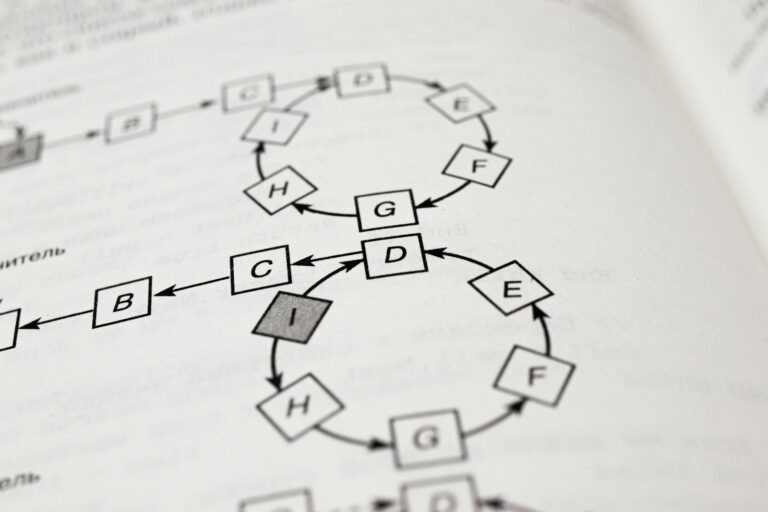In the domain of data structures, binary trees represent one of the most foundational and versatile non-linear structures. A binary tree is a tree data structure where each node has at most two children, typically referred to as the left child and the right child. Special forms of binary trees are specific variations with defined characteristics that optimize performance for certain types of operations. These structures are crucial in understanding not just theoretical computer science but also practical applications like expression parsing, memory management, and hierarchical file systems. This chapter from Unit 2 Notes Data Structures explores various special binary trees including full binary trees, complete binary trees, perfect binary trees, skewed trees, balanced binary trees, binary search trees (BST), and AVL trees. This content forms a vital part of B.Tech Data Structures Notes 2025 and serves as comprehensive Engineering Study Material for academic understanding and exam preparation.
Full Binary Tree
A full binary tree (also known as a proper or strictly binary tree) is a type of binary tree in which every node has either 0 or 2 children. This means no node can have only one child. It is characterized by having a symmetric and well-structured appearance.
Definition: A binary tree is called a full binary tree if each node has exactly zero or two children.
Properties:
- If a full binary tree has
ninternal nodes, it will haven + 1leaf nodes. - The total number of nodes in a full binary tree is
2n + 1, wherenis the number of internal nodes.
📌 Insert Diagram: Full Binary Tree with 7 nodes
This type of binary tree is useful for applications where every decision point (node) must split into two choices, such as Huffman coding trees in compression algorithms.
Complete Binary Tree
A complete binary tree is a type of binary tree in which all levels, except possibly the last, are completely filled, and all nodes are as far left as possible.
Definition: A binary tree is called a complete binary tree if all levels except the last are completely filled, and all nodes are as far left as possible.
Properties:
- Can be efficiently represented using an array.
- Ideal for heap data structures where insertion and deletion need to be efficient.
Example (Array Representation): For the tree:
1
/ \
2 3
/ \
4 5The array representation is: [1, 2, 3, 4, 5]
Perfect Binary Tree
A perfect binary tree is a binary tree in which all internal nodes have two children and all leaf nodes are at the same level.
Definition: A binary tree is called perfect if all internal nodes have two children and all leaves are at the same level.
Properties:
- The number of leaf nodes =
2^h, wherehis the height. - The total number of nodes =
2^(h+1) - 1
📌 Insert Diagram: Perfect Binary Tree of Height 2
Skewed Binary Tree
A skewed binary tree is a degenerate form of a binary tree where all the nodes have only one child. This tree mimics the behavior of a linked list and is generally considered inefficient for tree operations.
Types:
- Left Skewed Tree: Each node has only a left child.
- Right Skewed Tree: Each node has only a right child.
Drawback: The time complexity for basic operations like search becomes O(n) instead of O(log n).
📌 Insert Diagram: Left Skewed Tree of 5 Nodes
Balanced Binary Tree
A balanced binary tree is structured in such a way that the height difference between the left and right subtrees of any node is at most one.
Definition: A binary tree is balanced if for every node, the height of its left and right subtree differs by at most 1.
Importance:
- Ensures O(log n) time complexity for operations.
- Useful for implementing search trees and priority queues.
Binary Search Tree (BST)
A binary search tree is a binary tree with the property that for every node:
- The left subtree contains only nodes with keys less than the node’s key.
- The right subtree contains only nodes with keys greater than the node’s key.
Definition: A BST is a binary tree where each node follows the left < root < right property.
Applications:
- Searching
- Insertion
- Deletion
- Sorting (via in-order traversal)
In-Order Traversal of BST: Returns the elements in sorted order.
Example:
8
/ \
3 10
/ \ \
1 6 14In-order Traversal: 1, 3, 6, 8, 10, 14
AVL Tree (Adelson-Velsky and Landis Tree)
An AVL Tree is a self-balancing binary search tree where the balance factor (difference in height between left and right subtree) is maintained within [-1, 0, 1].
Definition: An AVL Tree is a self-balancing BST where the height difference between left and right subtree for every node is not more than 1.
Balance Factor = Height(left subtree) – Height(right subtree)
Rotations in AVL Tree: To maintain balance, the tree performs rotations:
- Left Rotation
- Right Rotation
- Left-Right Rotation
- Right-Left Rotation
📌 Insert Diagram: AVL Tree with Left-Right Rotation
Use-case: Real-time systems where quick lookups are critical.
🔹 Short Answer Questions (2-3 Marks)
- Define a full binary tree. A full binary tree is one in which every node has either 0 or 2 children.
- What is a complete binary tree? A complete binary tree is one where all levels are completely filled except possibly the last, which is filled from left to right.
- How many nodes are there in a perfect binary tree of height 3? A perfect binary tree of height 3 has 2^(3+1) – 1 = 15 nodes.
- What is a skewed binary tree? It is a binary tree where each node has only one child, making it resemble a linked list.
- What is the in-order traversal of a BST? In-order traversal of a BST gives the nodes in ascending sorted order.
- State the balance factor range in an AVL tree. The balance factor must be between -1 and 1 for all nodes.
- List two applications of BST. Searching and sorting.
🔸 Long Answer Questions (5-10 Marks)
- Explain the difference between full, complete, and perfect binary trees with examples. A full binary tree allows every node to have either 0 or 2 children. A complete binary tree ensures all levels are filled except the last, which is left-aligned. A perfect binary tree is both full and complete, with all leaf nodes at the same depth. These distinctions affect memory representation and algorithmic efficiency. For example, full trees are used in expression evaluation, complete trees are ideal for heaps, and perfect trees model balanced decision trees.
- What is an AVL Tree? Explain how it balances itself using rotations. An AVL Tree is a self-balancing binary search tree that maintains a height balance factor between -1 and 1. When the balance factor exceeds this range due to insertion or deletion, the tree restores balance through rotations: single rotations (left or right) or double rotations (left-right or right-left). These operations preserve the BST property while ensuring optimal height.
- Describe the characteristics and importance of a binary search tree (BST). BST ensures sorted data storage where all left descendants are less and all right descendants are greater than the root. It supports efficient searching, insertion, and deletion in O(log n) time in average cases. Traversals like in-order yield sorted data. It is fundamental in building fast lookup systems and priority queues.
- Explain the drawbacks of skewed binary trees and how balanced trees overcome them. Skewed binary trees degrade time complexity of operations to O(n) due to linear height. Balanced trees maintain logarithmic height, ensuring consistent performance. They are more efficient for high-volume dynamic datasets, making them suitable for large-scale applications.
- Illustrate with an example how in-order traversal of a BST returns sorted data. Consider a BST with nodes 5, 3, 7, 2, 4. After insertion, in-order traversal visits nodes in this order: 2, 3, 4, 5, 7. This demonstrates how the BST organizes data and retrieves it in sorted form, useful for in-memory database sorting.
📝 Chapter Summary
A full binary tree has 0 or 2 children per nodeA complete binary tree fills all levels except possibly the last onePerfect binary trees have all leaves at the same depth and full internal nodesSkewed binary trees resemble linked lists and are inefficientBalanced binary trees maintain height difference of at most 1Binary Search Trees (BST) follow left < root < right propertyAVL Trees are self-balancing BSTs with rotations to maintain efficiency
📘 Model Paper / Sample Internal Exam Questions
- Define and differentiate between full and complete binary trees with diagrams.
- Explain AVL tree balancing with the help of suitable examples and rotation techniques.
- What is the significance of in-order traversal in binary search trees?
- Illustrate with a diagram how a left skewed binary tree is formed.
- Write a short note on balanced binary trees and their advantages in searching.



